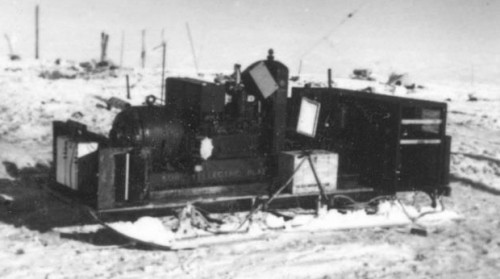| The Byrd Expedition and Collins' part in it by: Terry Lamb, AACLA President |
|
| The Rockwell Collins Museum is located at the rear of Bldg 120. It was established in 1983 using Collins government-based artifacts in it. Over time the museum has accumulated a large number of artifacts with some of them having large historical significance. | |
| Arthur had a notable reputation as a very knowledgeable HF radio transmitter designer and amateur radio operator. In 1925, when he was 16, Arthur and another amateur radio operator, John Reinartz, discussed the upcoming Artic Expedition by Navy Capt. Donald MacMillan where the Navy planned on using lower HF band frequencies to communicate while in the Artic. Reinartz had been invited to accompany the expedition. Both hams felt that shorter wave transmissions had a better chance to establish communications between the states and the Artic because of the atmospheric conditions that would be present. The two of them finalized schedules and frequencies for the time of the expedition. For 22 days the only contact with the expedition was between these two hams. Arthur would take down all the information and send it by Western Union to the National Geographic in Washington D.C. for distribution to the news media. One of the members of this expedition was Richard Byrd. | |
 Arthur taking meter readings prior to shipment. |
When Admiral Byrd started planning the 1933 expedition to Little America in the Antarctic, he remembered the communication problems of the MacMillan expedition. Arthur Collins was just in the startup process for Collins Radio Company. Contact was made with Arthur and an agreement made to build a transmitter for the Little America expedition. The plan was to have voice transmissions that could be broadcast over commercial radio. CBS was convinced to help sponsor such an endeavor. The transmitter designed was a 20B unit the size of a refrigerator. It and two exciter units would be built in Cedar Rapids and shipped to the Little American site. This was a major undertaking as the units were large and heavy needing power generators and fuel to also be transported to the Little America site. The adjacent photo shows Arthur with the units. The interesting thing about the whole process is that it doesn't appear that the units were protected with crates or other protection in any way during shipping. Most astounding is that the transmitters worked on arrival at the base camp. The equipment was moved by dog-team on a sled from the boat to the base camp. Needless to say, the whole process was a success. |
| We have the actual 20B transmitter that was on the Byrd expedition in our museum. The ruggedness and performance of Collins Radio equipment is exemplified by this unit. It is an example of Arthur Collins' requirement that Collins Radio equipment would have the best performance possible, be extremely reliable and be of the latest technology. The culture to meet these extraordinary requirements could be observed in the company and employees and the resulting products produced. |  One of the sleds used to move the equipment - including the generator, the fuel, and food for the dogs that pulled the sled. |